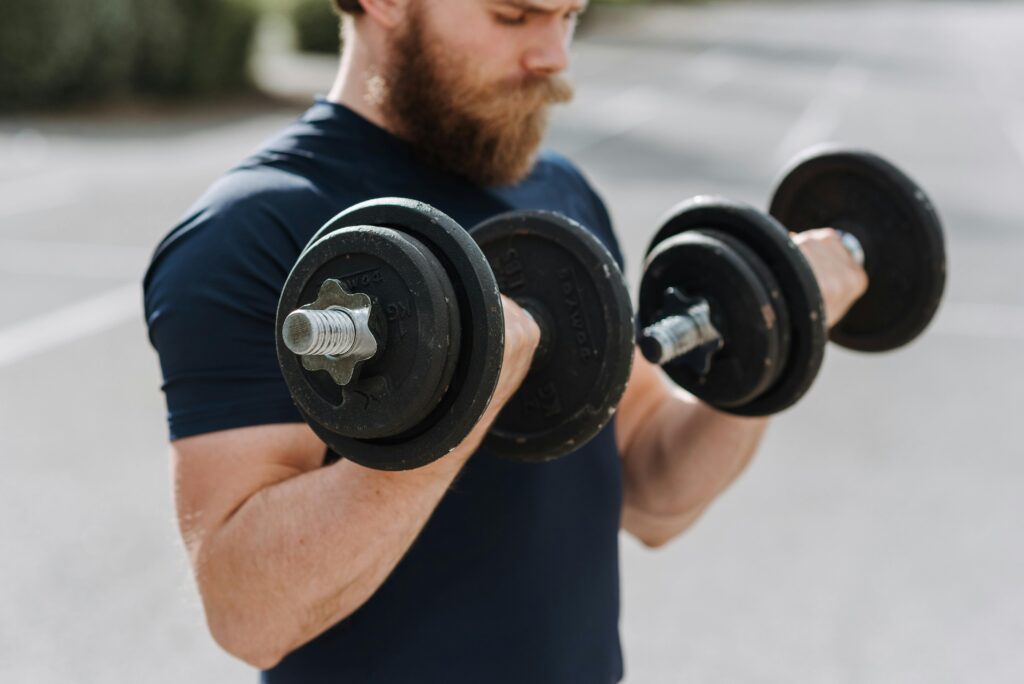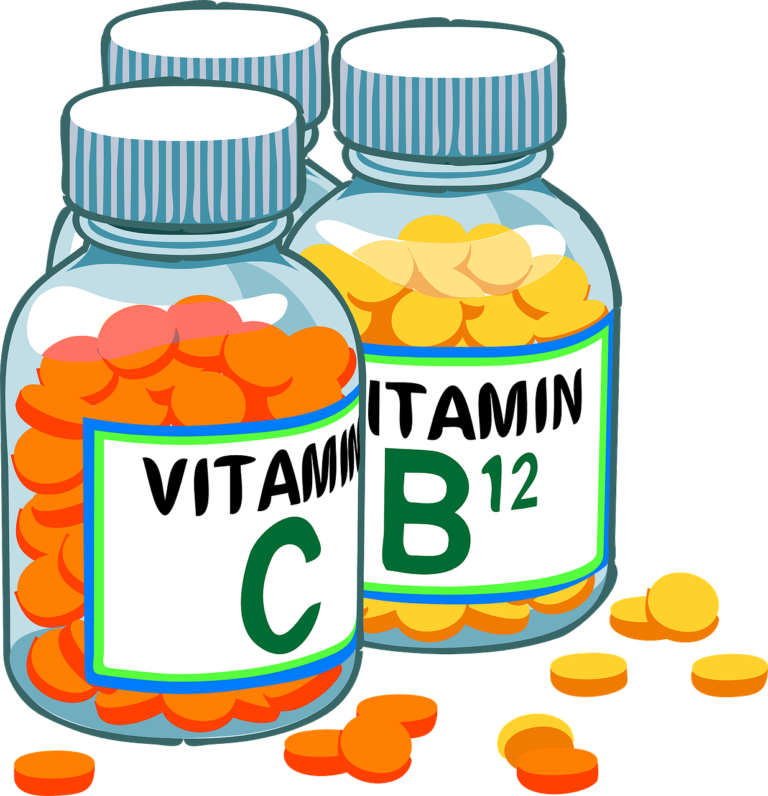Fitness After 40: The Ultimate Guide to Overcoming Age-Related Challenges and Staying Fit After 40
As we approach our forties, the significance of prioritizing health and fitness increases. Maintaining peak physical condition far into middle age and beyond is certainly doable, despite the inevitable decline that comes with getting older. Discover in this all-inclusive guide how to conquer the challenges that come with becoming older and live a full, active life after the big 4-0.

Can You Really Get Fit After 40?
Absolutely! Embracing fitness after 40 is not just feasible but incredibly rewarding. While there might be a common misconception that achieving peak fitness post-40 is daunting, the truth is quite the opposite. With dedication and a well-structured approach, individuals can attain and surpass their fitness goals, regardless of age.
The journey toward fitness in midlife can be particularly fulfilling, as it often entails a deeper understanding of one’s body and a heightened appreciation for the holistic benefits of exercise. By adopting sustainable habits, prioritizing self-care, and seeking guidance from professionals, anyone can embark on a transformative fitness journey well into their forties and beyond. It’s never too late to invest in your health and vitality.
This article will provide some important information to help you get started, maintain, and improve your health and fitness after 40.
Health and Fitness for Adults Over 40
Maintaining health and fitness after age 40 requires a comprehensive approach addressing various well-being aspects. Here’s how individuals can prioritize their health and fitness in their 40s:

- Physical Fitness and Exercise
Engage in a mix of cardiovascular exercise, strength training, flexibility, and balance exercises to maintain overall fitness and prevent age-related decline. Exercise has a list of benefits and becomes increasingly important as you age.
- Nutrition
Focus on consuming a balanced diet rich in fruits, vegetables, lean proteins, whole grains, and healthy fats to support energy levels, muscle mass, and overall health. Avoid foods filled with hormones, artificial flavors, colors, and preservatives.
- Mental Well-Being
Incorporate stress management techniques such as meditation, mindfulness, and relaxation exercises to promote mental clarity, emotional resilience, and overall well-being. Mental stress boosts cortisol, the hormone released during stress, which can plague you with several health problems.
- Rest and Recovery
Prioritize adequate sleep, rest, and recovery to support muscle repair, hormone regulation, and overall recovery from exercise and daily stressors. When you exercise and train, your body gets stronger and faster when you are sleeping. Without the proper rest, your body will not be able to properly and thoroughly repair and rebuild, nor will your body have the proper hormone release critical to regulation and repair.
- Regular Health Screenings
Schedule regular check-ups and health screenings to monitor for any age-related health issues and address them proactively. Getting a blood test with a complete panel screen could help you identify deficiencies, cholesterol, and under-regulated hormones. This could be one of the biggest differences in your fitness journey, regardless of your age.
These strategies can help adult hormones in adults over 40 maintain optimal health and fitness well into their later years.

How Often Should a 40-Year-Old Workout?
Maintaining a consistent exercise routine is essential for adults over 40 to promote overall health and fitness. Here are some guidelines for the workout frequency:
Cardiovascular Exercise
Aim for at least 150 minutes of moderate-intensity aerobic activity or 75 minutes of vigorous-intensity aerobic activity per week, spread out over several days. Walking is low-impact and has enormous health benefits. Walking daily can be ideal. And shoot for ten thousand steps per day.
Strength Training
Incorporate strength training exercises for all major muscle groups at least two days per week, with a day of rest in between sessions to allow for muscle recovery. Working until muscular failure is not necessary, and actually could be harmful if not done properly.
Flexibility and Balance
Include flexibility and balance exercises such as yoga or Tai Chi at least two to three times per week to maintain mobility and reduce the risk of falls. This urgency for flexibility and balance increases as we get older.
Rest Days
Allow for at least one to two rest days per week to prevent overtraining and promote adequate recovery.
Listen to Your Body:
Pay attention to how your body feels and adjust your workout frequency and intensity accordingly. It’s essential to strike a balance between challenging yourself and allowing for a proper recovery.
By following these guidelines, adults over 40 can maintain a balanced exercise routine that promotes overall health and well-being. Additionally, the most important factor in getting fit after 40 is consistency and frequency. Fitness should be a lifestyle that is embedded into the daily schedule.
Is 40 Too Late to Get Healthy?
Asking if it is too late to get healthy at 40 years old is like asking if it is too late to change a car tire if it is losing air. It is never too late. In fact, it is necessary, because if you do not do it now, it will shorten the time and quality your body (like the tire) can be used. No, 40 is not too late to prioritize your health and well-being. In fact, adopting healthy habits in your 40s can have numerous benefits for your overall health and longevity. Here are five reasons why it’s never too late to get healthy:

- Reduce the Risk of Chronic Diseases
Making healthy lifestyle changes, such as improving your diet, increasing physical activity, and managing stress, can help reduce your risk of developing chronic diseases such as heart disease, diabetes, and certain cancers. Living an unhealthy lifestyle increases your chances of getting sick as a result of a taxed immune system.
- Improved Quality of Life
By prioritizing your health, you can experience improvements in your energy levels, mood, sleep quality, and overall quality of life. This can lead to greater enjoyment of daily activities and a more fulfilling life. Exercise, when done correctly, creates a release of “happy” hormones. These hormones will not only put you in a good mood but will also give you loads of energy and the ability to concentrate.
- Increase Longevity
Research has shown that adopting healthy habits, such as exercising regularly, eating a balanced diet, and avoiding smoking and excessive alcohol consumption, can increase your lifespan and improve your chances of living a longer, healthier life.
- Boost Mental Health
Physical activity and healthy eating are not only beneficial for your physical health but also for your mental well-being. Regular exercise releases endorphins, which can improve mood, reduce stress and anxiety, and enhance cognitive function.
- Serve as a Role Model
By prioritizing your health, you can serve as a positive role model for your family, friends, and community. Making healthy choices can inspire others to do the same and create a ripple effect of wellness in your social circle.
By making small, sustainable changes to your lifestyle, you can improve your health and well-being at any age, including in your 40s.
Reasons Why It’s Never Too Late to Get Healthy
- Reduce the Risk of Chronic Diseases
- Improved Quality of Life
- Increase Longevity
- Boost Mental Health
- Serve as a Role Model
- Helps Regulate Hormones
- Enhances Metabolism
What Exercise Should I Be Doing in My 40s?
In your 40s, it’s essential to focus on exercises that promote strength, flexibility, cardiovascular health, and balance. Here are five types of exercises that are particularly beneficial for individuals in their 40s:

- Strength Training:
Incorporating strength training exercises such as lifting weights, using resistance bands, or performing bodyweight exercises helps maintain muscle mass, bone density, and metabolic rate, which tend to decline with age.
- Cardiovascular Exercise:
Engaging in aerobic activities such as brisk walking, jogging, cycling, swimming, or dancing helps improve heart health, stamina, and overall cardiovascular fitness.
- Flexibility Training:
Practicing flexibility exercises such as yoga, Pilates, or stretching helps improve joint mobility, reduce stiffness, and prevent injuries, especially as muscle elasticity decreases with age.
- Balance Exercises:
Including balance exercises such as standing on one leg, heel-to-toe walking, or using balance boards helps enhance stability, coordination, and proprioception, reducing the risk of falls and injuries.
- Functional Movements:
Performing functional movements that mimic activities of daily living, such as squats, lunges, and pushing or pulling movements, helps improve overall functional fitness and makes daily tasks easier to perform. The older you get, the more important functional training becomes.
Incorporating a combination of these exercises into your fitness routine can help you stay strong, flexible, and active well into your 40s and beyond.
How Much Protein Should I Eat? How Many Calories Should I Be Consuming?
Protein and calorie needs vary depending on individual factors such as age, gender, weight, activity level, and goals. However, here are some general recommendations for protein intake and calorie consumption for adults over 40:

- Protein Intake:
Aim to consume approximately 0.5 to 1 gram of protein per kilogram of body weight per day to support muscle maintenance, repair, and overall health. For example, if you weigh 70 kilograms (154 pounds), aim for 56 to 70 grams of protein per day. Increase in protein, while maintaining all other macronutrients
- Calorie Consumption:
Calorie needs vary depending on factors such as metabolism, activity level, and goals. However, as we age, our metabolism tends to slow down, so it’s essential to adjust calorie intake accordingly to prevent weight gain. Focus on consuming nutrient-dense foods and listening to your body’s hunger and fullness cues to maintain a healthy weight.
- Quality of Protein Sources:
Choose lean protein sources such as poultry, fish, eggs, legumes, tofu, tempeh, and low-fat dairy products. Incorporating a variety of protein-rich foods into your diet ensures that you’re meeting your amino acid needs and obtaining essential nutrients.
- Balanced Diet:
In addition to protein, prioritize consuming a balanced diet rich in fruits, vegetables, whole grains, healthy fats, and adequate hydration to support overall health and well-being.
- Consultation with a Registered Dietitian:
For personalized nutrition guidance, consider consulting with a registered dietitian who can assess your individual needs, goals, and dietary preferences to create a tailored nutrition plan.
By following these recommendations and making informed choices about protein intake and calorie consumption, adults over 40 can support their overall health and fitness goals.
What Are Some Exercises to Avoid in My 40s?
While exercise is essential for overall health and well-being, certain types of exercises may pose a higher risk of injury, particularly as we age. Here are five exercises to approach with caution or avoid altogether in your 40s:
- High-Impact Cardio
- Heavy Weightlifting without Proper Form
- Overhead Exercises with Heavy Weights
- Extreme Flexibility Exercises
- Unsupported Spinal Twists

- High-Impact Cardio:
Exercises that involve repetitive jumping or high-impact movements, such as running on hard surfaces, jumping rope, or high-intensity interval training (HIIT), may increase the risk of joint pain, stress fractures, and other injuries, especially if you have underlying joint issues or conditions such as arthritis.
- Heavy Weightlifting without Proper Form:
While strength training is beneficial, lifting heavy weights without proper form and technique can lead to injuries, particularly to the back, shoulders, and knees. It’s essential to start with lighter weights and focus on mastering proper form before increasing weight load.
- Overhead Exercises with Heavy Weights:
Exercises that involve lifting heavy weights overhead, such as shoulder presses or overhead squats, can put excessive strain on the shoulders and spine, increasing the risk of rotator cuff injuries, shoulder impingement, and neck strain. It’s crucial to use appropriate weight and technique to prevent injury.
- Extreme Flexibility Exercises:
While maintaining flexibility is important for overall mobility and joint health, extreme flexibility exercises, such as deep backbends or splits, may strain ligaments, tendons, and muscles, leading to injuries such as strains, sprains, or even dislocations. Focus on gentle stretching and gradually increase flexibility over time.
- Unsupported Spinal Twists:
Spinal twists can be beneficial for improving spinal mobility and flexibility, but unsupported or overly forceful twists can strain the spine and surrounding muscles, leading to back pain or injury. It’s essential to perform spinal twists with proper alignment and support from the core muscles.
By being mindful of these exercises and modifying your workout routine accordingly, you can reduce the risk of injury and maintain a safe and effective fitness regimen in your 40s.
What Kind of Foods Do I Need to Be Aware of After 40?
As we age, our nutritional needs may change, and certain foods become more important for maintaining overall health and well-being.
Types of Foods to Prioritize After 40
- Calcium-Rich Foods
- Omega-3 Fatty Acids
- Antioxidant-Rich Foods
- Fiber-Rich Foods
- Protein-Rich Foods

Let’s explore these important nutritional recommendations…
- Calcium-Rich Foods: Calcium is essential for maintaining bone health, especially as we age and bone density naturally declines. Incorporate calcium-rich foods such as dairy products, leafy green vegetables, tofu, almonds, and fortified foods into your diet to support bone strength and reduce the risk of osteoporosis.
- Omega-3 Fatty Acids: Omega-3 fatty acids have anti-inflammatory properties and are beneficial for heart health, brain function, and joint health. Include sources of omega-3 fatty acids such as fatty fish (salmon, mackerel, sardines), flaxseeds, chia seeds, walnuts, and hemp seeds in your diet to support overall health and reduce the risk of chronic diseases.
- Antioxidant-rich Foods: Antioxidants help protect cells from damage caused by free radicals and oxidative stress, which can contribute to aging and chronic diseases. Incorporate antioxidant-rich foods such as berries, citrus fruits, leafy green vegetables, nuts, seeds, and dark chocolate into your diet to support immune function, skin health, and overall vitality.
- Fiber-rich Foods: Fiber is important for digestive health, blood sugar control, and cholesterol management. Include fiber-rich foods such as whole grains, fruits, vegetables, legumes, nuts, and seeds in your diet to support gut health, promote regularity, and reduce the risk of heart disease, diabetes, and certain cancers.
- Protein-rich Foods: Protein is essential for maintaining muscle mass, supporting immune function, and promoting satiety. Incorporate lean protein sources such as poultry, fish, eggs, tofu, tempeh, legumes, and low-fat dairy products into your meals and snacks to support overall health and fitness goals.
By prioritizing these nutrient-dense foods and maintaining a balanced diet, adults over 40 can support their overall health, vitality, and longevity.
The Vital Importance of Rest, Recovery, Sleep, and Active Rest After 40
In addition to exercise and nutrition, adequate rest, recovery, sleep, and active rest are crucial components of a balanced and sustainable fitness regimen, especially for adults over 40.
Benefits of Prioritizing Rest and Recovery
- Muscle Repair and Growth
- Prevention of Overtraining and Burnout
- Hormonal Balance
- Immune Function
- Mental Well-Being

- Muscle Repair and Growth: Rest and recovery periods allow muscles to repair and rebuild after exercise-induced damage, leading to muscle growth and improved strength over time. Without adequate rest, muscles may become fatigued, increasing the risk of injury and hindering progress.
- Prevention of Overtraining and Burnout: Overtraining occurs when the body is subjected to excessive physical stress without sufficient rest and recovery. This can lead to fatigue, decreased performance, increased risk of injury, and burnout. Incorporating rest days and recovery techniques helps prevent overtraining and promotes long-term sustainability in fitness.
- Hormonal Balance: Adequate rest and sleep are essential for regulating hormones involved in appetite control, metabolism, stress response, and muscle repair. Chronic sleep deprivation or inadequate rest can disrupt hormonal balance, leading to increased stress, cravings for unhealthy foods, and impaired recovery.
- Immune Function: Sleep and rest play a crucial role in supporting immune function, helping the body fight off infections and illnesses. Chronic sleep deprivation or inadequate rest can weaken the immune system, making individuals more susceptible to illness and delaying recovery from exercise-induced stress.
- Mental Well-Being: Rest and relaxation are essential for mental health and well-being. Taking time to unwind, relax, and engage in activities that promote stress relief, such as meditation, deep breathing, or gentle yoga, can help reduce anxiety, improve mood, and enhance overall quality of life.
By prioritizing rest, recovery, sleep, and active rest as integral components of your fitness routine, you can optimize your health, performance, and longevity well into your 40s and beyond.

This comprehensive approach to health and fitness ensures that individuals over 40 can overcome age-related challenges and achieve optimal health and well-being. By incorporating regular exercise, balanced nutrition, adequate rest, and recovery into their lifestyle, they can enjoy a vibrant, active, and fulfilling life well into their later years.
Remember, it’s never too late to prioritize your health and fitness. With dedication, consistency, and a focus on holistic well-being, individuals over 40 can thrive and continue to reach their fitness goals for years to come.
Whether you’re just starting your fitness journey in your 40s or looking to maintain your health and vitality, implementing these strategies can help you overcome age-related obstacles and achieve your fitness aspirations.
So, embrace the journey, listen to your body, and celebrate every milestone along the way. Your health and well-being are worth the investment, no matter what age you are.
Here’s to a healthy, active, and fulfilling life after 40!






